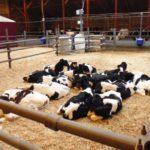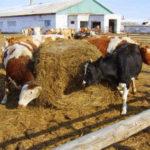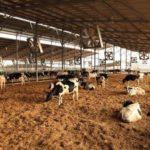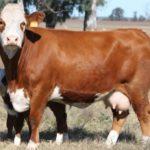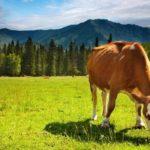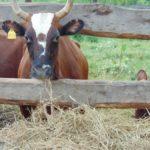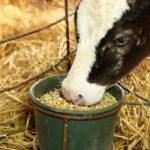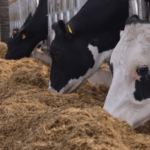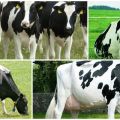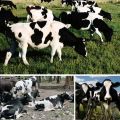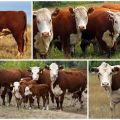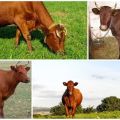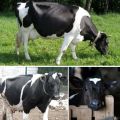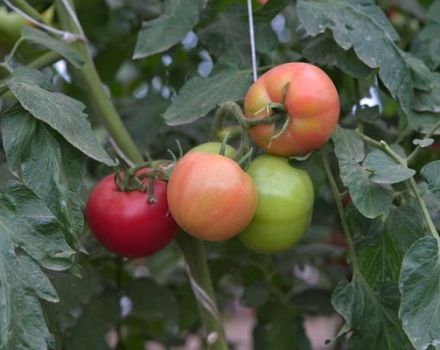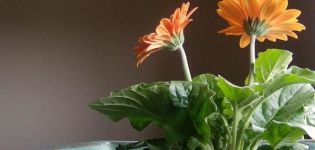The essence of the loose cow method, advantages and disadvantages
The way animals are kept affects their productivity. More and more farmers have begun to transfer cattle to loose-fitting method of keeping cows. He performed well in Western Europe and the USA. However, before moving on to loose content, they carefully study the methodology, determine the positive and negative aspects. The farmer should first prepare the room in which the animals will be kept.
Method essence
The loose keeping of cattle implies free movement around the barn and the area for walking. The cow is constantly on the move, which has a positive effect on her health. If you analyze the method from the point of view of benefits, then it will give good results. Cows will feel safe, and active pastime will increase comfort. This will have a positive effect on the production of dairy products and the quality of meat.
Boxing has the opposite effect on the animal. He will no longer need to move, since the feeder is located 2 meters away. The combobox content differs in that the room is delimited into sections, but at the same time, space is saved in the room.
Advantages and disadvantages
The loose-fitting method of keeping animals is ideal for farms with more than 400 herds. It is not possible to pay attention to each animal, therefore this technique will allow the animal to feel as comfortable as possible. These cows are not suitable and not adapted to live in confinement separately from the rest of the livestock.
When cows are transferred to this method
The transfer of cattle to loose content is carried out to achieve the following tasks:
- increased comfort for the animal;
- the formation of a diet and development regime;
- use of special tables instead of standard feeders, which will speed up feeding;
- dividing cows into physiological groups, which will allow you to look after them and adhere to the veterinarian's recommendations more effectively.
The free-range method is recommended for use in large herds (over 400 animals). This will create ideal housing conditions and reduce the likelihood of stressful situations for animals.

How to navigate free content
This is recommended if there is sufficient feed and good bedding. Animals with this technique move more, therefore they need a nutritious feed with a high content of proteins and mineral salts.
Before transferring cows to new methods of keeping, complete veterinary control is carried out. Cleaning of hooves, preventive examination for the presence of infectious diseases is carried out. It is also important to remove the horns to avoid possible injury to the cows. This can be done by chemical, physical or thermal methods.
The loose housing is suitable for medium-sized animals. If the cow is thin or too large, it is recommended to keep it separately in a stall. Such individuals are not suitable for free content. There are 2 subspecies of loose housing: the option with box habitat and on deep bedding.
Milking Features
Milking cows in a separate room. It is designed so that cows enter the section through a separate entrance without mingling with animals that farmers have not yet milked. Experts recommend milking a herd of no more than 3.5 hours. To keep within this period of time, use individual machines or group stationary installations. It all depends on the size of the room and the number of heads in the herd.
It has been scientifically proven that a cow's milk yield directly depends on the animal's comfort. It is recommended that the herd be divided into several groups, which will enter the milking parlor, so that productivity does not decrease. It is impossible to move animals between groups, it is necessary that they get used to the presence of each other.
Division of the herd
Experts recommend moving animals that are accustomed to this method to loose housing. Therefore, you should divide the herd into several separate groups. This will optimize production processes.
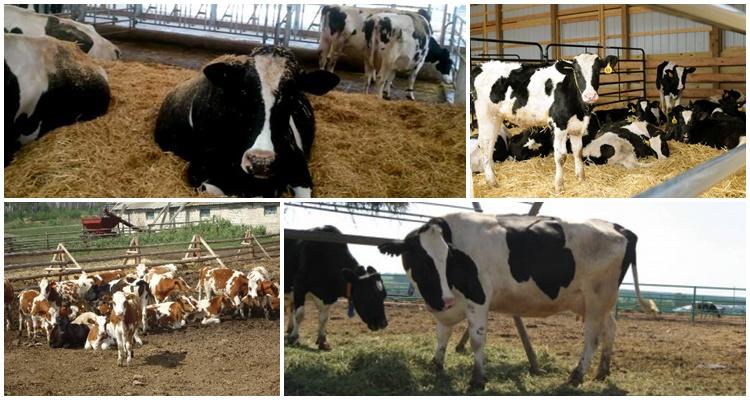
The herd is divided into pregnant dry cows, individuals with high productivity, cows with low productivity. Dry and deep-bed groups are recommended to be tied, as they are not suitable for loose containment. For the rest of the groups, a separate section with a feeding area and a drinker is organized.
Area norms
When arranging stalls, they are guided by the rule in which the optimal space is allocated to the animal. To do this, measure the cow, add 15-20 cm to the result obtained.With free maintenance, experts recommend setting the area norm at the level of 4-5 square meters. If the cow is in position, she will need more space.
Feeding
Animals need a particularly nutritious food. The specific ration is compiled depending on the division of the herd into separate groups.Taking into account the physiological characteristics of livestock and the recommendations of the veterinarian, the farmer draws up the optimal menu, which must be balanced. This will allow the animal to receive a maximum of nutrients and make it more productive.
To create comfortable conditions for cattle, it is recommended to provide free access to clean drinking water.
Milking and insemination workshops
To assess the productivity of cows, to develop an effective method of culling and ranking, the farm must equip a separate insemination and milk production facility. In this room, each animal will spend several months.
In the dairy shop, animals are grouped according to their productivity. As practice shows, usually it is enough to create 3-4 groups for this.
Insemination is carried out both artificially and naturally. The latter option is used if the herd size is small, or the farmer has specially trained personnel to monitor the process. Most often, an artificial technique is used, as this guarantees an almost 100% result.
Manure removal
Cleanliness is a guarantee of animal health, a prerequisite for keeping them comfortable. The litter should be cleaned daily to keep the flock in optimal conditions. To optimize the process, it is recommended to remove the manure while feeding the animals. To make cleaning easier, indoor floors should be slightly sloped. This will significantly speed up the removal of manure without creating discomfort for the animals.
